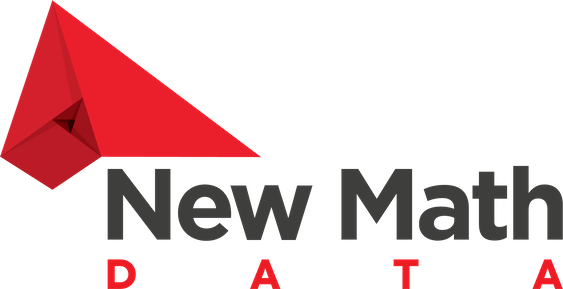Pros, Cons, and Key Differences between two great AI IDEs
As AI-assisted development tools continue to evolve, choosing the right IDE can significantly impact your coding productivity and workflow. After extensive hands-on testing with both Kiro AI IDE and Cursor AI IDE, I want to share my detailed comparison and insights to help you make an informed decision.
Kiro and Cursor each have their own strengths and excel in different areas. I’ll walk you through their unique advantages so you can decide which one fits your needs best.
Understanding the Coding Approaches
What is Vibe Coding?
Vibe coding refers to the intuitive, conversational approach to coding where developers interact with AI assistants in natural language to generate, modify, and debug code. It’s about coding with the ‘vibe’ or flow of natural conversation rather than traditional syntax-heavy programming. This approach allows developers to express their intentions naturally and let the AI translate those intentions into working code.
Vibe coding can be useful for rapid prototyping or quick demonstrations, but it is not a tool you use for building projects for production.
What is Kiro Spec Coding?
Kiro spec coding is a structured development methodology that breaks down complex features into systematic phases. It generates three main components:
- REQUIREMENTS: Detailed user stories and acceptance criteria that define what needs to be built
- DESIGN: Comprehensive architecture and implementation plans that outline how it will be built
- TASKS: Actionable coding steps that break down the implementation into manageable pieces
Press enter or click to view image in full size

This approach ensures thorough planning before implementation, reducing the likelihood of architectural issues and missed requirements.
Evaluation Approach
To compare apples to apples, I set both IDEs to use Claude Sonnet 4 and tested them on similar development tasks, focusing on their core capabilities and user experience.
Elaborating on Key Differences
Coding Approach: The Spec-Coding Advantage (Point to Kiro)
The most significant difference lies in Kiro’s dual approach, combining vibe coding with spec-coding. While both tools offer conversational code generation, Kiro’s spec-coding methodology provides a structured framework for complex projects. This systematic approach of breaking down features into requirements, design, and tasks proves invaluable for larger, more complex development efforts.
Code Change Visibility: Different Philosophies (Point to Cursor)
Cursor’s approach of highlighting changes and requiring user approval provides immediate visibility and control over what the AI is modifying. This can be reassuring for developers who want to review every change. Kiro’s approach is more streamlined but requires users to actively check the execution log to see what changes were made, which might not suit all workflows. I found Cursor’s approach more practical and helps review changes versus a block of code without direct evidence of where the changes were made.
Press enter or click to view image in full size

Agent Hooks: Automation Potential (Point to Kiro)
Kiro’s agent hooks functionality stands out as a unique feature that enables powerful automation workflows. Agent Hooks listen to file changes and automatically trigger Kiro to take followup action. You can configure file paths, event triggers, and follow-up actions to take.
This capability allows developers to set up automated responses to specific events or triggers, significantly enhancing productivity for repetitive tasks. For example, agent hooks can be used for updating documentation when code changes, or automatically updating translation files for multilingual projects when new strings are added.
Press enter or click to view image in full size

Notebook Support: A Data Science Edge (Point to Kiro)
For data scientists and researchers, Kiro’s full notebook editing support is a game-changer. The ability to create and modify Jupyter notebooks directly within the IDE workflow provides a seamless experience that Cursor currently lacks.
Press enter or click to view image in full size

Multi-LLM Support (Point to Cursor)
Cursor allows testing and experimenting with different LLMs, or you can even bring your own model and hook it up, while Kiro, at this point, is limited to Sonnet.
Press enter or click to view image in full size

My Personal Experience
The Kiro Journey: Structured but Challenging
Using Kiro steering, it created requirements, design, and tasks, and after executing 8 of 11 tasks to set up the project, it suddenly stopped and said “session too long, summarize and start a new session”. Since I didn’t have many options, I clicked yes. In the new session, it did not continue executing the tasks, as if summarization was not enough, but eventually, after I provided enough context, it continued where it started.
I was stressed about that interruption, as it took more than one hour in the initial setup. Eventually, it took several hours to get the setup ready in place, but to be honest, I tested it on an advanced system design idea. It was an imaginary one, but it did a cool job.
Self-Debugging Capabilities
Something I liked about the Kiro agent is that it does self-debugging after execution failure. This autonomous problem-solving capability proved valuable when encountering errors or unexpected issues during development.
Press enter or click to view image in full size

Problem-Solving Comparison
After testing both, comparing the vibe coding of both environments, Kiro did a better job solving problems and coming up with automatic diagnoses to solve the problems it faced. When the same issue was presented to both, Kiro did a better job analyzing it and solving the problem. Remember, I am running the benchmark using Claude Sonnet 4 on both, but the internal automation of the Kiro agent with self-diagnosis turned out to be a time saver instead of testing each approach and getting back to the chat to let Cursor know that it did not work.
The Power of Agent Hooks
Also, having agent hooks is quite a great functionality to have, it helps automate many tasks. This feature alone can significantly streamline repetitive development workflows.
Data Science Advantage
I think, Kiro, with its support for notebooks, is a great tool for data scientists; hopefully, Cursor will add that later in the future.
Important Recommendations and Warnings
I would like to emphasize that these assisted tools are great additions to help you develop faster, but I do not recommend using them unless you know what you are doing, and you fully understand the code generated.
Even when used, you should not trust the generated code or functionality; you should:
Code Review is Essential
- Read all the code generated line by line: Don’t blindly accept AI-generated code
- Estimate efficiency: Evaluate the performance implications of the generated solutions
- Do a security risk evaluation: Check for potential vulnerabilities or security issues
Know Your Domain
- Do not use it for a language you know nothing about: As a result, you won’t be able to evaluate the quality and risks of the generated code. Unless you are using it just for fun, I would recommend learning the language/tech first, before you use the AI IDE to generate code.
- Understand the fundamentals: You need sufficient knowledge to assess whether the AI’s approach is appropriate.
Think Before You Ask
- Think of your options and alternatives: Before asking the agent to do something for you, consider if there might be better approaches
- Maintain critical thinking: Don’t let the convenience of AI assistance replace your analytical thinking
A Special Note for Junior Developers
In my opinion, I strongly advise junior developers to approach AI IDEs with caution. While these tools can be incredibly powerful, they can potentially hinder skill development if used too early in one’s learning journey. Junior developers benefit most from getting their hands dirty and truly learning the fundamentals, rather than relying on auto-generated code they don’t fully understand. I recommend building a solid foundation in programming concepts and best practices before incorporating AI assistance into your workflow.
Looking Forward
Both of them are adding new features every day, and looking forward to a more mature version of both. The AI-assisted development space is rapidly evolving, and both Kiro and Cursor are pushing the boundaries of what’s possible.
Conclusion
Choosing between Kiro and Cursor depends largely on your development style and needs:
- Choose Kiro if: You work on complex projects that benefit from structured planning, need notebook support, or want powerful automation through agent hooks
- Choose Cursor if: You prefer immediate visibility of code changes, need access to multiple AI models, or want more granular control over the AI’s modifications
Both tools represent significant advances in AI-assisted development, and the choice ultimately comes down to which approach aligns better with your workflow and project requirements. Regardless of which tool you choose, remember that these are assistants, not replacements for your expertise and judgment.
One last item I would like to add to the comparison list above is that Kiro’s ghost logo totally beats Cursor’s. Finally, a cute AWS logo! 😄
Have you tried either Kiro or Cursor? I’d love to hear your experiences and how they compare to mine. Stay tuned for more insights on generative AI tools and services.
Author
Noor Sabahi | Senior AI & Cloud Engineer | AWS Ambassador
#KiroIDE #CursorIDE #AIAssisted #DevelopmentTools #CodeGeneration #VibeCode #SpecCoding #AgentHooks #NotebookAIAssistedTool #MCPServers

